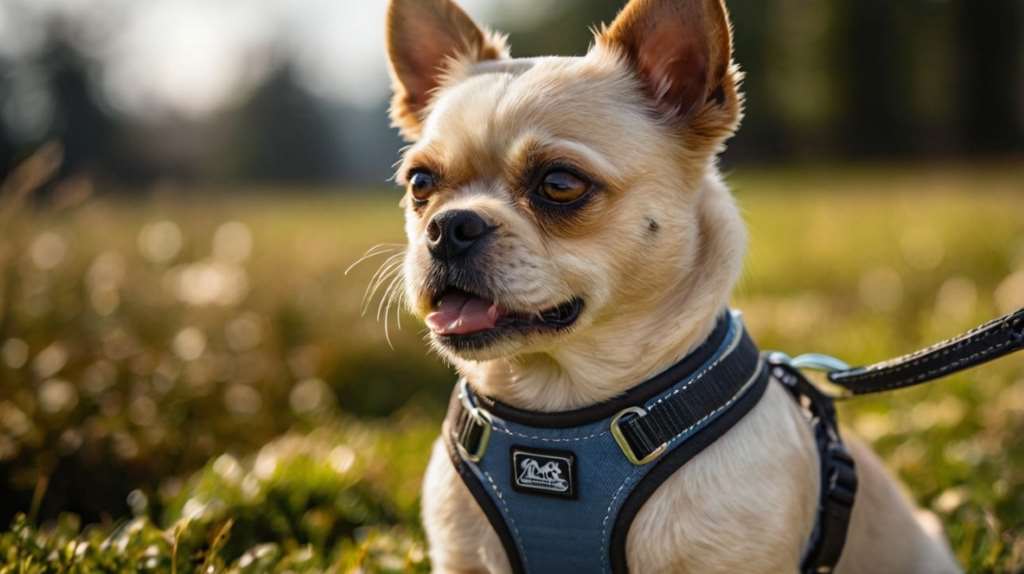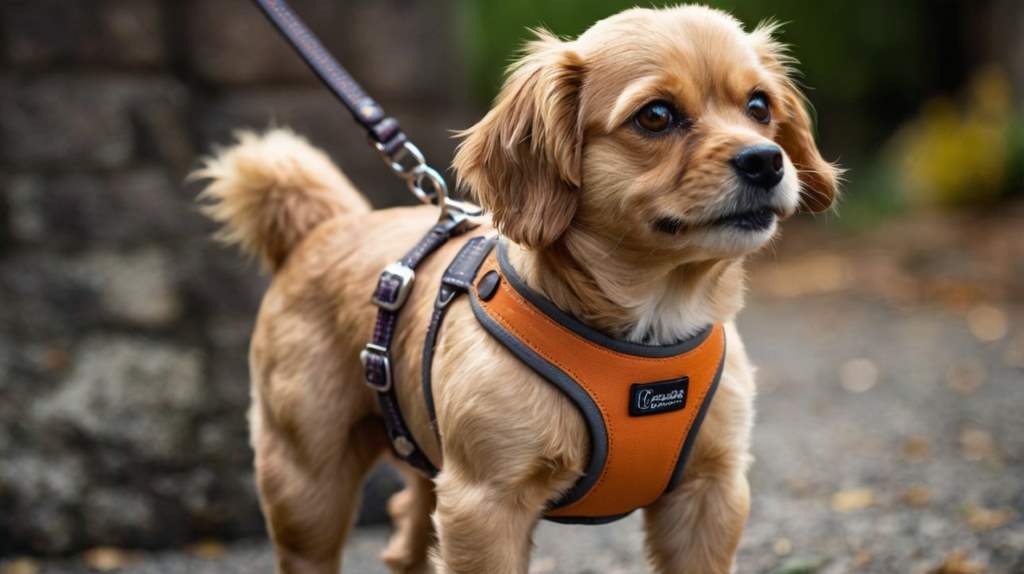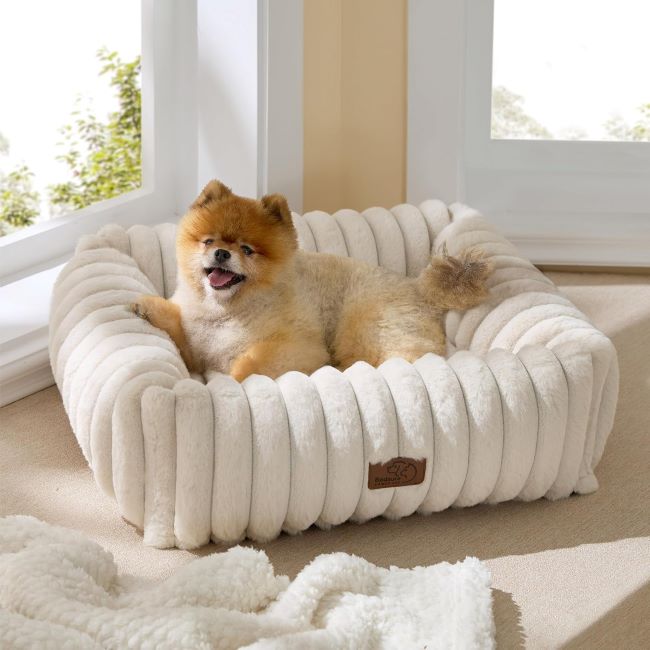Hey there, fellow dog lover! If you’re here, you’re probably wondering whether a small dog harness is the right choice for your furry friend. Well, you’re in the right place. Let’s dive into the world of small dog harnesses and explore their pros and cons. We’ll keep it light, engaging, and packed with useful info. Ready? Let’s go!
Why Consider a Harness for Your Small Dog?
Before we get into the nitty-gritty, let’s talk about why you might consider a harness in the first place. If you’ve ever walked a dog that pulls on the leash, you know it can be a bit of a struggle. A harness can help distribute the pressure more evenly across your dog’s body, making walks more comfortable for both of you. Plus, they can be a great training tool for puppies and small dogs.

The Benefits of Using a Small Dog Harness
1. Better Control
One of the biggest advantages of using a harness is the control it gives you. Unlike collars, which can put pressure on your dog’s neck, a harness distributes the force across the chest and shoulders. This means you can guide your pup more effectively without causing discomfort.
2. Reduced Risk of Injury
Small dogs are more delicate than their larger counterparts. A collar can put a lot of strain on their neck, especially if they pull or lunge. A harness, on the other hand, reduces the risk of neck injuries by spreading the pressure over a larger area.
3. Prevents Escapes
Ever had your dog slip out of their collar? It’s a heart-stopping moment, isn’t it? Harnesses are generally more secure, making it harder for your little escape artist to wriggle free.
4. Comfort for Brachycephalic Breeds
If you have a breed like a Pug or a French Bulldog, you know they can have breathing issues. A harness can be a better option for these breeds as it avoids putting pressure on their neck and throat, making breathing easier.
5. Training Aid
Harnesses can be a great tool for training. They give you more control, which can be helpful when teaching your dog to walk nicely on a leash. Some harnesses even come with front clips that help discourage pulling.
The Drawbacks of Using a Small Dog Harness
1. Can Be Tricky to Fit
Getting the right fit can be a bit of a challenge. A harness that’s too tight can cause chafing, while one that’s too loose can lead to escapes. It’s important to measure your dog properly and adjust the harness to fit snugly but comfortably.
2. May Restrict Movement
Some harnesses can restrict your dog’s natural movement, especially around the shoulders. This can be uncomfortable and may even lead to joint issues over time. Look for a harness that allows for a full range of motion.
3. Can Be Bulky
Harnesses can be bulkier than collars, which might not be ideal for very small dogs. Some dogs might find them uncomfortable or may take some time to get used to wearing one.
4. Potential for Chafing
If a harness doesn’t fit properly, it can cause chafing, especially in areas where the straps rub against the skin. Regularly check for signs of irritation and adjust the fit as needed.
5. More Expensive
Harnesses can be more expensive than collars, especially if you’re looking for a high-quality, well-fitting option. However, the investment can be worth it for the added comfort and safety.
Types of Small Dog Harnesses
Now that we’ve covered the pros and cons, let’s talk about the different types of harnesses available. Each type has its own benefits and drawbacks, so it’s important to choose the one that best suits your dog’s needs.
1. Back-Clip Harness
This is the most common type of harness. The leash attaches to a D-ring on the back, making it easy to put on and take off. It’s great for well-behaved dogs that don’t pull too much.
2. Front-Clip Harness
A front-clip harness has the leash attachment on the chest. This can help discourage pulling, as it redirects your dog’s attention back towards you. It’s a good option for training and for dogs that tend to pull on the leash.
3. Dual-Clip Harness
As the name suggests, a dual-clip harness has both front and back leash attachments. This gives you the flexibility to switch between the two depending on your needs. It’s a versatile option for training and everyday walks.
4. Step-In Harness
A step-in harness is designed to be easy to put on. Your dog simply steps into the harness, and you fasten it around their body. It’s a good choice for dogs that don’t like having a harness put over their head.
5. Vest Harness
A vest harness is a more padded option that can be more comfortable for some dogs. It distributes pressure evenly and can be a good choice for dogs with sensitive skin or those prone to chafing.
How to Choose the Right Harness for Your Small Dog
Choosing the right harness can feel overwhelming with so many options available. Here are some tips to help you make the best choice for your furry friend.
1. Measure Your Dog
The first step is to measure your dog. You’ll need to measure around the widest part of their chest and the base of their neck. Use these measurements to choose the right size harness.
2. Consider Your Dog’s Needs
Think about your dog’s specific needs. Do they pull on the leash? Do they have breathing issues? Are they prone to escaping? Choose a harness that addresses these concerns.
3. Try Before You Buy
If possible, take your dog to the pet store and try on different harnesses. This can help you find the best fit and ensure your dog is comfortable.
4. Check for Adjustability
Look for a harness that is adjustable in multiple places. This will help you get a snug, comfortable fit and accommodate any changes in your dog’s size or weight.
5. Read Reviews
Check out reviews from other dog owners. This can give you an idea of how well a harness works in real-life situations and help you avoid any potential issues.
Tips for Using a Small Dog Harness
Once you’ve chosen the right harness, it’s important to use it correctly to ensure your dog’s comfort and safety.
1. Introduce the Harness Gradually
If your dog isn’t used to wearing a harness, introduce it gradually. Let them sniff and explore the harness before putting it on. Start with short periods of wear and gradually increase the time.
2. Check the Fit Regularly
Regularly check the fit of the harness to ensure it’s not too tight or too loose. Adjust as needed to keep your dog comfortable and secure.
3. Watch for Signs of Discomfort
Keep an eye out for signs of discomfort, such as chafing, redness, or changes in behavior. If you notice any issues, adjust the fit or try a different type of harness.
4. Keep the Harness Clean
Regularly clean the harness to prevent dirt and bacteria buildup. Follow the manufacturer’s instructions for cleaning and maintenance.
5. Use Positive Reinforcement
Use positive reinforcement to help your dog associate the harness with good things. Give treats and praise when putting on the harness and during walks.
Conclusion
So, there you have it! Small dog harnesses come with their own set of advantages and disadvantages. They offer better control, reduce the risk of injury, and can be more comfortable for certain breeds. However, they can also be tricky to fit, may restrict movement, and can be more expensive than collars. The key is to choose the right type of harness for your dog’s needs and ensure it fits properly.
Remember, every dog is unique, and what works for one might not work for another. Take the time to find the best option for your furry friend, and you’ll both enjoy more comfortable and enjoyable walks together.




